This park stretches out along 25-miles of the southern shore of Lake Michigan between the industrial centers of Gary and Michigan City. This small 15,000 acre park is only one hour from Chicago. Thus, the beaches receive a flood of visitors on weekends in the summer. To plan our perfect trip to Indiana Dunes National Park, I started by exploring the park’s best things to do. First, I created a checklist that includes essential spots to visit, including the beautiful beaches, hiking paths, and impressive sand dunes. Crafting the ultimate Indiana Dunes getaway requires strategy: prioritizing the must-see highlights like the park’s iconic Mount Baldy, best beaches like Kemil Beach, and biodiverse trails that wind through rare ecosystems.
This post may contain affiliate links, meaning if you purchase something through one of these links, we may earn a small commission at no extra cost to you! Read the full disclosure policy here.

On February 15, 2019, Congress renamed Indiana Dunes National Lakeshore, officially designating it as the 61st national park. What makes this park unique is that Indiana Dunes State Park is within the boundaries of the larger national park. Indiana Dunes National Park consists of several distinct areas, including the West Beach, the Central Dunes, and the Portage Lakefront and Riverwalk.

Table of Contents
Itinerary: Experience A Full Day of Adventure in Indiana Dunes
Coming from Prophetstown State Park, we arrived at our campsite in the early afternoon and made a quick beeline to the visitor center. This way, with all the maps and information in hand, we could get an early start on the next day. When I planned our dream getaway to Indiana Dunes NP, I knew we need to get an early in the morning in the west section of the park, continuing east throughout the day.
Note: Indiana Dunes State Park charges a separate vehicle entry fee – $7 for in-state vehicles and $12 for out-of-state vehicles (This state park does not accept the America the Beautiful federal lands pass.)


Where is Indiana Dunes? How to Get there?
Location: Indiana Dunes National Park along the southern shore of Lake Michigan in Indiana. Close to several major cities, it is easily accessible by car.
- From Chicago, Illinois (64 miles): Take I-90 East for about 38 miles. Take exit 61 for Indiana Toll Road I-90 East and continue for 17 miles. Take exit 26 north for Indiana Dunes National Park. Allow approximately 1 hour, 15 minutes for the drive.
- From South Bend, Indiana (43 miles): Take I-80 East for about 31 miles. Take exit 31 north for Indiana Dunes National Park. Allow approximately 50 minutes for the drive.
- From Indianapolis, Indiana (170 miles): Take I-90 East for about 120 miles. Take exit 61 for Indiana Toll Road I-90 East and continue for 17 miles. Take exit 26 north for Indiana Dunes National Park. Allow approximately 3 hours, 15 minutes for the drive.
- The closest major airports to Indiana Dunes National Park are: Chicago O’Hare International Airport (ORD) – 64 miles away. Chicago Midway International Airport (MDW) – 51 miles away. South Bend International Airport (SBN) – 43 miles away.

Useful Information for Visitors to Indiana Dunes National Park:
- Operating Hours: The park is open to visitors around the clock, 365 days a year. The Dorothy Buell Memorial Visitor Center. is open year-round from 8:00 a.m. to 6:00 p.m. To find out more about other facilities, visit the park’s official website or contact them directly: (219) 926-2255 or (800) 283-8687 (toll-free). Indiana Dunes State Park is open daily from 7:00 am to 11:00 pm. The Nature Center is open Wednesday – Sunday 10 a.m.- 4 p.m.
- Entrance Fees: An entrance pass is required to access Indiana Dunes National Park. A standard pass is $15-$25. The America the Beautiful Annual Pass grants free access to national parks for an entire year. If you have this pass, you can use it at this location. We recommend getting the pass if you plan to visit more national parks in the future.
- Choose the Best Time to Visit: Summer (June-August) is the peak season. Warmest weather for swimming, sunbathing, and enjoying the beach. Fall (September-November) Comfortable temperatures for leaf peepers looking for the fall foliage. The leaves typically peak in late October. Spring (April-May) Pleasant weather for hiking, biking and migratory birdwatching. Wildflowers in bloom, especially in mid-April and early May. Winter (December-March) Perfect for finding solitude, winter sports like cross-country skiing and snowshoeing.
- Accommodation: Indiana Dunes NP itself doesn’t have any lodging options within the park boundaries. For convenient lodging, several hotels and motels are in nearby towns of Chesterton, Portage, Michigan City, and Gary.. The park has two reservable campgrounds: Dunewood Campground and the Dunbar Group Site. Book reservations through recreation.gov.
- What to Pack: Clothing: Dress in layers for varying weather; include swimwear, hiking shoes, and a light jacket. Gear: Bring a backpack, water bottle, sunscreen, and insect repellent. Camera: Capture the beautiful scenery and wildlife.

Start Your Adventure at the Dorothy Buell Memorial Visitor Center in Indiana Dunes NP
I headed straight to the Dorothy Buell Visitor’s Center. It’s a great starting point for exploring the park. The interactive displays are quite minimal, covering the park’s history, and its wildlife and conservation efforts. It was a little disappointing. This is probably because it shares the space with the Indiana Dunes State Park and the Porter County Convention, Recreation and Visitor Commission. Therefore, there are plenty of promotional materials. The park theater showcases two different movies: Child of the Northwest Wind and Porter County’s Our Natural Wonder, playing alternatively every hour. Don’t forget to stop by the gift shop to get your Natioanl Park Passport booklet stamped before leaving..

One of the Best Things to do In Indiana Dunes: Hiking the Dunes!
So, what’s there to do at Indiana Dunes? This park offers over 60 miles of scenic trails across the national and state park, allowing visitors to discover their own path. The park’s extensive system of well-groomed trails meanders through tranquil wooded landscapes and beside serene marshes that teem with a variety of wildlife, including whitetail deer, migratory birds, and the occasional coyote.
PRO Tip: Yes, you can bring your dog on a leash to many parts of Indiana Dunes National and State Parks. However, there are some places where they do not allow dogs, like the Pinhole Upland Trail because the environment there is very delicate.

Complete the Great 3 Dune Challenge in Indiana Dunes State Park
After the visitor center, we had a few hours to kill before dinner. Since we were so close to we figured we would tackle the Three Dunes Challenge in Indiana Dunes State Park. This is a strenuous round-trip hike of about 1.5 miles. Hikers must conquer three distinct sand dunes to complete this challenging trek.

This hike is a favorite among visitors, taking you to the top of the park’s three highest sand dunes: Mount Holden, Mount Jackson, and Mount Tom. Each dune presents its own unique set of obstacles from steep inclines to lose sand that can make the climb difficult. Conquering all three dunes proved to be a rewarding experience, both physically and mentally.
PRO Tip: Wear sturdy shoes suitable for sandy terrain. Sand can be hot during summer, so consider wearing sandals with ankle straps or hiking shoes. Wear sturdy shoes suitable for sandy terrain. Sand can be hot during summer, so consider wearing sandals with ankle straps or hiking shoes.

Paul H. Douglas (Miller Woods) Trail
Early on our first day, we headed out to the western section of the park. The Paul H. Douglas (Miller Woods) Trail was a pleasant surprise. This 3.5-mile out-and-back trail offered ample parking today. After crossing the road, we stopped by the Paul H. Douglas Center for Environmental Education before beginning our hike. The loop through the wetlands was mercifully free of mud, which was appreciated with our dog Sage in tow. Taking the north trail, we found little shade even in the rolling black oak savanna. However, the yellow and white pond lilies bloomed brightly in the interdunal wetlands. Crossing the Grand Calumet River, the landscape transitioned to mostly sandy dunes before reaching the beach on Lake Michigan. Unfortunately, the views of the US Steel plant from the beach left much to be desired.

Toes in the Sand at One of the Best Beaches in Indiana Dunes: West Beach
West Beach in Indiana Dunes National Park is a lovely place. It’s the westernmost beach in the park. Lake Michigan is easily accessible, making it a magnificent spot for swimming, sunbathing and searching for treasures on the beach. The pavilion has bathrooms, a bathhouse with lockers, a snack bar and pathways that go straight to the beach. Many people who live nearby take their dogs for a walk in the morning because there is plenty of parking available.

There’s nothing quite like the feeling of sinking your toes into the warm sand. It’s the perfect place to unwind, soak up the sun, and let all your worries drift away. However, we only have a limited time today to see all this park has to offer, so we keep continue with our trek.

Embark on the Dunes Succession Hike
Once you are at West Beach, begin by setting aside some time to explore the famous Dune Succession Trail. This 1-mile loop has 250 stairs that traverse through the ever-changing dune landscape. We started off counterclockwise, tackling the section of uphill stairs first. As we climbed to the peak of the highest dunes, there was an overlook. On such a clear day, we had panoramic views of Lake Michigan and the Chicago skyline.

Interpretive signs tell the story of “Diana of the Dunes” who was a conservationist in the early 1900s. Continuing, the trail descends on a wooden boardwalk through woods before reaching the beach. Here you will need to remove your shoes as the sugary sand will fill your shoes.
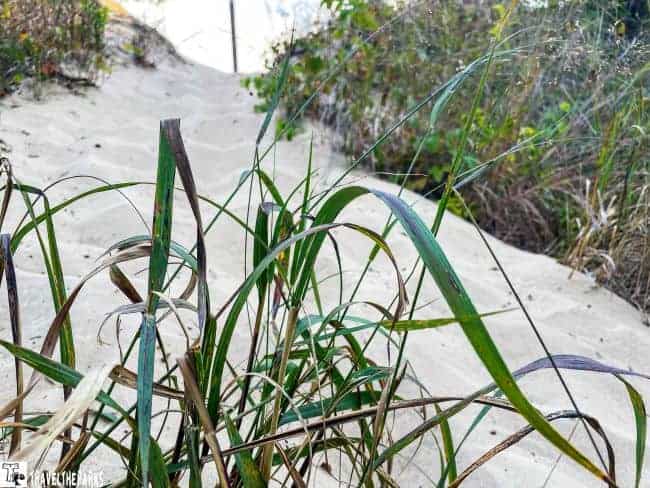
Trek The Tolleston Dunes Trail
The Tolleston Dunes Trail winds through 4,700-year-old sand dunes, remnants of a time when Lake Michigan’s water level was 25 feet higher than it is today. The lollipop loop trail is 2.9-miles that pass through wetlands and upland black oak savannah. We opted to take the shorter loop of 1.5-miles. After the boardwalk section, the trail was a bit overgrown and buggy. Lots of prickly pear cactus and fall wildflowers make this trail interesting.

Exploring the Portage Lakefront & Riverwalk in Indiana Dunes
The paved riverwalk trail at the mouth of the Little Calumet River offers an excellent setting for walking, jogging, or biking, allowing visitors to enjoy views of the water. Today, the weather is perfect for a stroll along the 900-foot breakwater jutting into Lake Michigan – a feature I thoroughly enjoyed. Looking into the clear waters, we spotted smallmouth bass, ducks, and other shorebirds among the rocks. A lone angler was casting for King salmon, and we briefly chatted with him about his luck before heading back toward the pavilion. The 0.9-mile riverfront trail loop continues along the Burns Waterway, an area that was previously an industrial wasteland used by steel companies for waste processing and settling ponds.

The pavilion area has restrooms, a seasonal snack bar and educational facilities. Every Wednesday evening from 7:30 to 8:30 during the summer, the park hosts a delightful fireside chat led by a knowledgeable ranger. Guests can bring marshmallows to roast over the crackling fire. We built time into tour schedule for this and it was wonderful.

Indiana Dunes’ Best-Kept Secret: The Bailly Homestead and Its French-Canadian Legacy
Visitors can explore the nearby Bailly Homestead and Chellberg Farm in a single day, immersing themselves in the area’s rich historical past. The Bailly Homestead offers a glimpse into early settlement, while Chellberg Farm showcases the region’s agricultural heritage from a later era. I found this area to be one of the hidden gems in Indiana Dunes.

PRO Tip: Wear comfortable shoes for walking and exploring the grounds, as the terrain can vary from paved paths to more rustic trails.
If you head 0.3 miles (0.5 km) to the left from the parking lot, you’ll come across the Bailly Homestead, which features the main house and a few other buildings. The Bailly family set up log cabins back in the early 1800s. Bailly was a French Canadian fur trapper who ran a trading post before switching his family’s focus to lumber in the mid-1800s. Don’t forget to check out the 0.3-mile spur trail that leads to the Bailly Family cemetery. Just stick to the path and keep an eye out for poison ivy!

Living History: How Chellberg Farm Preserves 19th-Century Midwest Rural Life
Just a short walk to the right, about 0.1 mile, you’ll find the Chellberg Farm. It has a charming brick farmhouse from 1885, a sugar shack, and several other buildings where the national park service takes care of animals like chickens, goats, turkeys, and hogs. They keep the same breeds that the original Chellberg family had. Checking out the farm is a cool way to step back in time. Plus, it’s pretty neat that the national park service is using the goats from the farm to tackle invasive plants!

The day we ventured to the farm, they were hosting the Duneland Fall Festival, celebrating the harvest. The historical demonstration activities at the event highlighted practical skills that were essential for early 20th century families, such as blacksmithing, and apple pressing. Additionally, the NPS staff offered hayrides, as well as live entertainment and food trucks, to create a well-rounded experience for attendees.
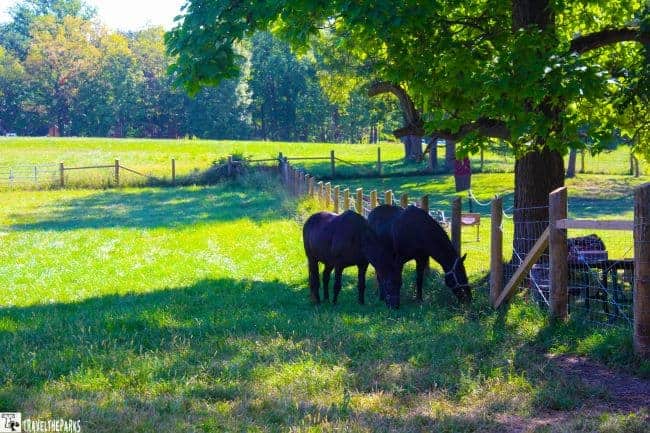
Beyond the Beach: Exploring Cowles Bog’s Trails, Wildlife, and Rare Habitats
They named this trail after ecologist Doctor Henry Cowles. It is a 4.3-mile trail loop-starting in the marshlands, winding through the woods. Near the top, the trail turned to sand. Descending into the dunes, the trail emerges onto the beach. We walked along the shoreline, taking in the views. I must say the nearby power-plant does nothing to enhance the views.
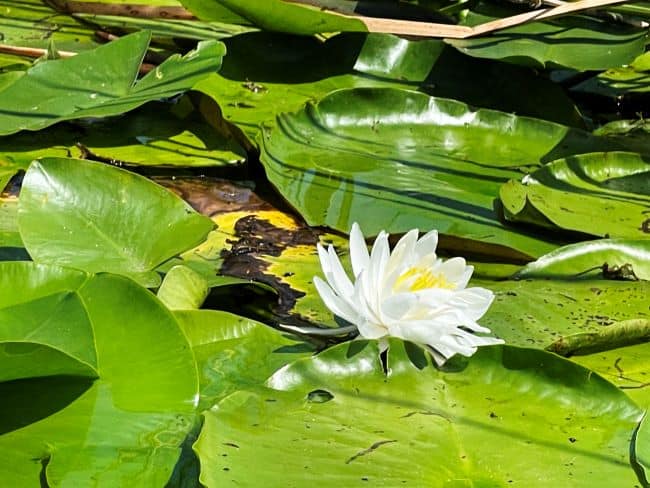
Heading back to complete the loop, the sand dunes are challenging, so I’d recommend proper shoes and trekking poles. I cheated and used our dog, Sage, to help pull me up the dune. We did the loop counterclockwise, as recommended by AllTrails. As expected, it is a lush bog with ferns and wildflowers. There were plenty of mosquitos, biting flies and horseflies. Would definitely recommend bringing plenty of water, snacks for energy, and bug spray.

933 Chicago World’s Fair Century of Progress Homes
The 1933 Chicago World’s Fair, known as the “Century of Progress Exposition,” featured a striking display of innovative homes. These homes showcased the remarkable advancements in residential architecture and design during that era. The fairgrounds included model homes, known as the “Century of Progress Homes.” Following the conclusion of the fair, five model homes were relocated and reconstructed within Indiana Dunes National Park along Lake Front Drive in Beverly Shores. These historic structures are now listed on the National Register of Historic Places.

Architect Andrew Rebori designed the home in 1937 using an innovative approach to building. Not only did he showcase the potential of steel in residential construction, but also highlighted the importance of creating affordable housing solutions for families. The Armco-Ferro House exemplifies modern architecture.

The Wieboldt family, prominent figures in the Chicago area, commissioned architect Walter Scholer to design their retreat. Scholer’s innovative design featured a steel frame and an experimental cladding material called Rostone. Despite advertising Rostone’s weather-resistant properties, the material proved less durable than expected, and the home had severely deteriorated by 1950. The owners later covered the deteriorating facade with a concrete stucco called Perma-stone.

Designed by Miami architect Robert Law Weed, the “pink” Florida Tropical House blended indoor and outdoor spaces, reflecting the mid-century trend of seeking leisure and comfort in nature. The Cypress Log Cabin highlights the versatility of cypress wood, as architect Murray D. Heatherington designed it. Finally, the House of Tomorrow, designed by Chicago architect George Fred Keck and built in 1933, is currently undergoing renovation.
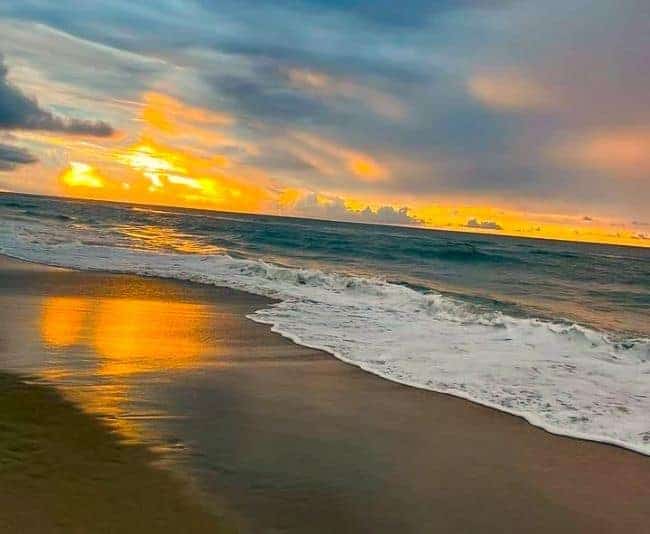
Hang Out at the Best Beach in Indiana Dunes National Park
The decision to have a picnic lunch at Kemil Beach was an easy one, given our proximity to the area. Visiting midweek after Labor Day allowed us to enjoy the beach in a peaceful setting. We parked in the beach lot, which provided convenient access to the Dune Ridge Trail for a leisurely hike after our meal. The beautiful surroundings made our experience at Kemil Beach truly enjoyable.
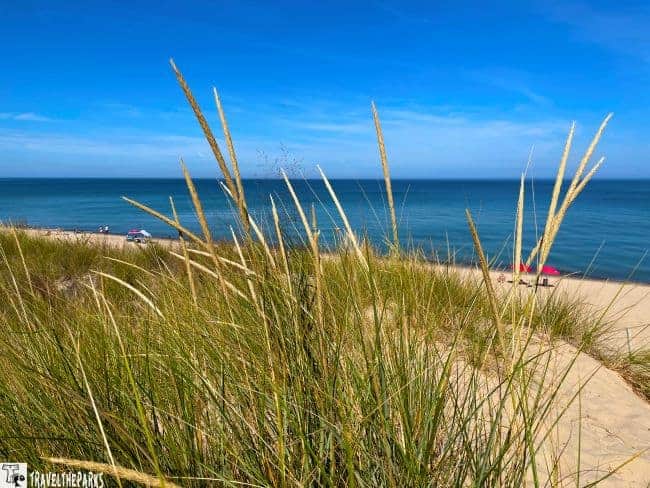
While there are other beaches in the area, some more popular than others, Dunbar Beach is usually less crowded and shares many similarities with Kemil. If we’d had more time, we would have visited more of the local beaches. As it was, we continued on to hike the Dune Ridge Trail after our picnic.

Climb the Dunes Ridge Trail
The 2.5-mile trail features moderate elevation changes and is well-marked, with interpretive signs that provide insight into the area’s natural history. As we hiked the lollipop-shaped loop in a clockwise direction, we were rewarded with amazing views of the great marsh once we reached the ridge.

Mount Baldy Beach Trail
Mount Baldy, a beloved 126-foot sand dune, faces a significant challenge as it steadily migrates inland at a rate of 4 feet or more per year. This iconic natural landmark no longer receives new sand deposits from Lake Michigan. As a result, the park restricts access to its summit. Despite these obstacles, Mount Baldy remains an awe-inspiring testament to the ever-changing landscape of the park.

The 0.75-mile trail leading to the beach is steep and strenuous because of loose sand, but the journey is worthwhile. However, I was a bit disappointed in the view from the beach as the distant industrial steel mills, an unavoidable eyesore, marred it.

Final Thoughts: How to Plan the Perfect Trip to Indiana Dunes National Park
This national park is a worthy addition to any Midwest road trip itinerary. I must say this park was not my top favorite, but hey, every park has its charm, right? While I deeply appreciate all national parks, I avoid making comparisons between them. The sand dunes at this park, for instance, are significantly smaller in scale than the iconic dunes at White Sands National Park or Great Sand Dunes National Park.
With so much to see and do, it’s easy to see why the Indiana Dunes have become a beloved destination for nature lovers from near and far. With thoughtful planning, your trip to Indiana Dunes National Park can be both enjoyable and memorable. Enjoy your adventure!
Have you been to Indiana Dunes National Park? Did you get a chance to do any of these activities? Do you think Indiana Dunes is worth visiting? Share your thoughts in the comments below.





Ruth Durand
Is overnight RV parking allowed in the visitor parking lot? We were able to do so on our trip the park a few years ago, and we will be making a trip to the IN Dunes aroud mid-September. We absolutely loved our experience at the park and hopefully park our RV in the lot. Thank you!
Travel the Parks
From what I understand yes you can stay one night. They have 20 spaces available. I hope you have an amazing time at the park on your return trip.